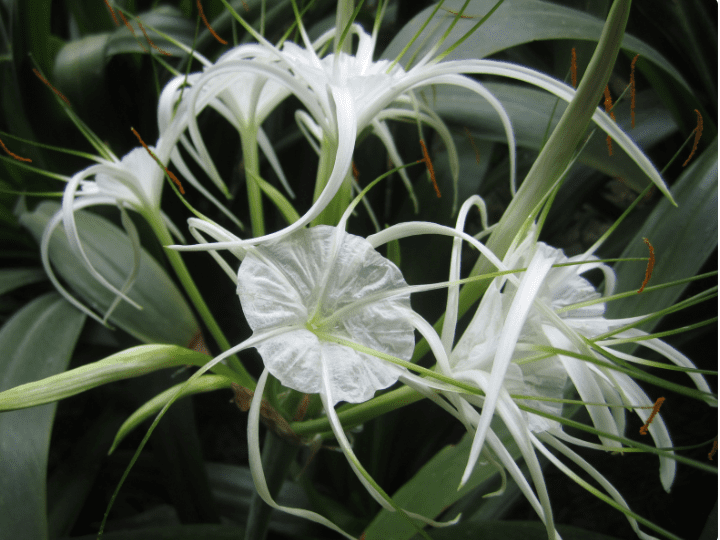
Master Growing the Spider Lily (Hymenocallis speciosa)! This article unlocks the secrets to vibrant blooms. Learn about ideal soil, watering, winter care, and more. Effortlessly cultivate these captivating flowers in your garden!
With its slender, dramatic petals arching outwards like spider legs, the Spider Lily is a captivating addition to any garden. Also known as Hymenocallis speciosa, this exotic flower boasts cultural significance in some parts of the world and is surprisingly easy to grow.
Native to the balmy Caribbean and South America, Spider Lilies have adapted well to various climates, making them a popular choice for gardeners worldwide. In this guide, we’ll delve into the essentials of cultivating Spider Lilies, ensuring your garden flourishes with vibrant and healthy blooms for years to come.
Optimal Growing Conditions
To thrive, Spider Lilies need conditions that mirror their natural tropical habitat. They require full to partial sunlight, ideally receiving at least six hours of direct sunlight daily. This sunlight fuels their growth and encourages prolific blooming. As for temperature, Spider Lilies prefer warm weather, typically between 60°F to 80°F (15°C to 26°C). Protecting them from frost is crucial, as it can damage the bulbs and hinder growth.
Tip: Spider Lilies are known to bloom in late summer or early fall, adding a touch of elegance to your garden as other flowers begin to fade.
Soil Requirements and Preparation
Spider Lilies favor rich, well-draining soil with a slightly acidic to neutral pH (6.0 to 7.0). Mix in organic compost or peat moss to prepare the perfect bed to enrich the soil’s nutrient content and improve drainage. This prevents the bulbs from sitting in water, which can lead to rot. When choosing a planting site, ensure it has good drainage and won’t collect standing water.
Planting Spider Lilies

Planting at the right time is vital for the Spider Lily’s growth cycle. The ideal window is in late spring or early summer after the danger of frost has passed. Plant the bulbs roughly 3 to 4 inches deep and 6 to 8 inches apart. This spacing allows for proper air circulation and ample room for growth. Cover the bulbs with soil and water them thoroughly to settle the soil around them.
Watering and Fertilization
Consistent moisture is key to keeping your Spider Lilies happy, especially during their active growing and blooming seasons. Aim for deep watering once a week, allowing the soil to dry slightly between waterings. Overwatering or letting the plants sit in water can cause bulb rot, so proper drainage is essential.
For fertilization, a balanced, slow-release fertilizer formulated for bulbs applied every four to six weeks during the growing season will provide the necessary nutrients for continuous growth and vibrant blooms. Remember to stop fertilizing by late fall as the plants enter their dormancy.
Pest and Disease Management

Spider Lilies are generally resistant to pests and diseases. However, they can occasionally be bothered by spider mites and aphids. Regularly inspect your plants and promptly remove any pests you find. If necessary, use a mild insecticidal soap solution to treat the plants.
Bulb rot is the leading disease concern and can be prevented by ensuring proper soil drainage and avoiding overwatering. If rot occurs, remove the affected bulbs immediately to stop the disease from spreading.
Propagating Spider Lilies
Propagating Spider Lilies is a simple process that allows you to expand your garden or share these beautiful flowers with others. The most effective method is by dividing the bulbs. Every few years, during late summer or early fall, carefully dig up the bulbs and gently separate them. Replant the divisions immediately, following the same planting guidelines as for new bulbs.
Landscape Uses and Final Thoughts on Growing the Spider Lily
Spider Lilies are a fantastic way to add a touch of exotic elegance to borders, gardens, and even ponds. Their striking appearance makes them a focal point in any landscape design. With proper care, these captivating plants can grace your garden with stunning blooms for years.
By following these detailed care instructions, you can ensure your Spider Lilies flourish and bring a haunting beauty to your garden. Remember, the key to successful Spider Lily cultivation is mimicking their natural tropical environment as closely as possible.
Winter Care: In colder climates, it’s recommended to trim the leaves of Spider Lilies back in late fall or early winter. The bulbs are generally hardy, but you can provide additional protection by mulching around the base of the plants with a light layer of organic material, such as shredded leaves or straw. Remove the mulch in the spring once the danger of frost has passed.

























